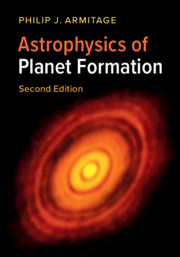Book contents
- Frontmatter
- Contents
- Preface
- 1 Observations of Planetary Systems
- 2 Protoplanetary Disk Structure
- 3 Protoplanetary Disk Evolution
- 4 Planetesimal Formation
- 5 Terrestrial Planet Formation
- 6 Giant Planet Formation
- 7 Early Evolution of Planetary Systems
- Appendix A Physical and Astronomical Constants
- Appendix B The Two-Body Problem
- Appendix C N-Body Methods
- References
- Index
1 - Observations of Planetary Systems
Published online by Cambridge University Press: 27 January 2020
- Frontmatter
- Contents
- Preface
- 1 Observations of Planetary Systems
- 2 Protoplanetary Disk Structure
- 3 Protoplanetary Disk Evolution
- 4 Planetesimal Formation
- 5 Terrestrial Planet Formation
- 6 Giant Planet Formation
- 7 Early Evolution of Planetary Systems
- Appendix A Physical and Astronomical Constants
- Appendix B The Two-Body Problem
- Appendix C N-Body Methods
- References
- Index
Summary
Chapter 1 introduces key observational constraints for the theory of planet formation. It reviews the properties of the Solar System's planets and minor bodies, explains the principle of radioactive dating of primitive meteorites, and defines the minimum mass Solar Nebula. The main methods used to detect extrasolar planets - radial velocity monitoring, transits, direct imaging, microlensing, and astrometry - are introduced and compared. Observed properties of extrasolar planetary systems are reviewed, including the orbital distribution of planets, their mass-radius relation, and the dependence of planet frequency on stellar host properties. The concept of the habitable zone and the factors that influence planetary habitability are described.
Information
- Type
- Chapter
- Information
- Astrophysics of Planet Formation , pp. 1 - 48Publisher: Cambridge University PressPrint publication year: 2020
